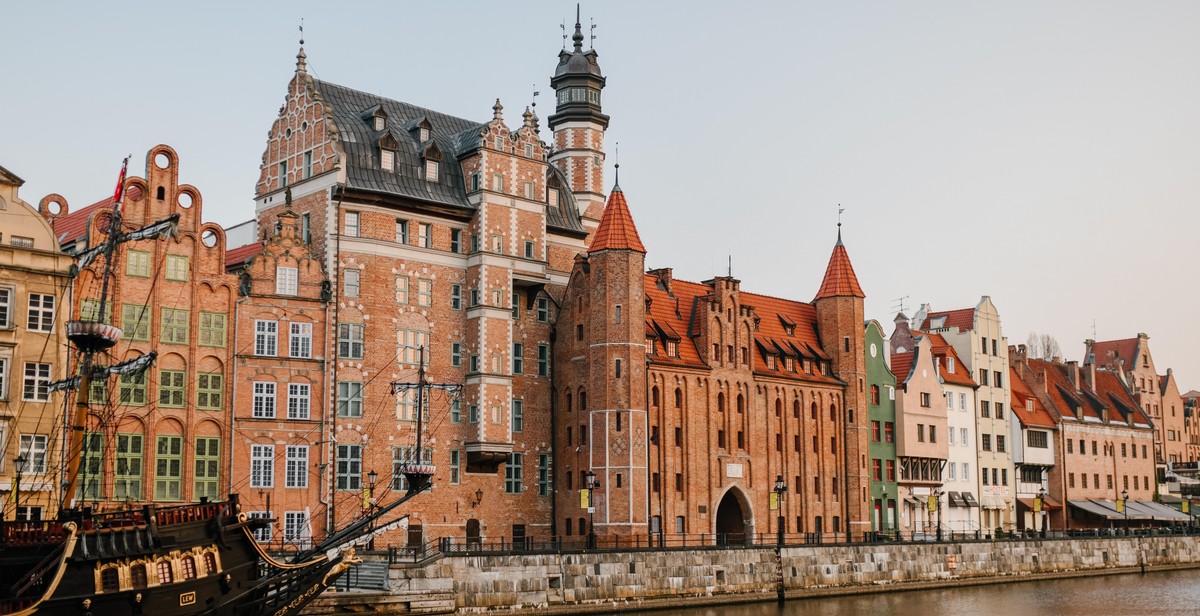Introduction: How to Create a Budget-Friendly Travel Itinerary
Traveling is an exciting experience that opens up a world of opportunities, but it can also be expensive. One way to ensure that you get the most out of your trip without breaking the bank is to create a budget-friendly travel itinerary. By planning your trip in advance and sticking to a budget, you can explore new places, try new experiences, and make unforgettable memories without worrying about overspending.
Why Creating a Budget-Friendly Travel Itinerary is Important
Creating a budget-friendly travel itinerary is important for several reasons. First, it helps you to avoid overspending and going into debt. By setting a budget and sticking to it, you can ensure that you don’t spend more money than you can afford. Second, it allows you to prioritize your spending and focus on the experiences that matter most to you. If you have a limited budget, you can use it to splurge on a fancy meal or a once-in-a-lifetime activity, rather than wasting it on unnecessary expenses.
Finally, a budget-friendly travel itinerary can help you to make the most of your trip. With a clear plan in place, you can maximize your time and see everything that you want to see without feeling rushed or stressed. Whether you’re traveling solo, with friends, or with family, creating a budget-friendly travel itinerary is a smart way to ensure that you have a fun, memorable, and affordable trip.

Step 1: Choose Your Destination
Choosing the right destination is crucial when it comes to creating a budget-friendly travel itinerary. Here are some tips to help you choose:
Research Your Destination
Before you decide on a destination, do some research on the cost of living, transportation, and activities in the area. Look for travel blogs or forums where people share their experiences and recommendations. Check out the local tourism board’s website for information on free or low-cost attractions.
Consider Off-Season Travel
If you’re flexible with your travel dates, consider visiting your destination during the off-season. This is when prices for flights, accommodations, and activities are typically lower. Plus, you can avoid the crowds and enjoy a more authentic experience.
Look for Deals and Discounts
There are plenty of deals and discounts available for travelers, especially if you know where to look. Check out travel deal websites like Travelzoo or Groupon for discounted packages and activities. Sign up for airline and hotel loyalty programs to earn points and rewards that you can use towards future travel.
| Tip: | Use websites like Skyscanner or Kayak to compare flight prices across multiple airlines and find the cheapest option. |
|---|
By following these tips, you can choose a destination that fits your budget and still offers plenty of opportunities for adventure and exploration.

Step 2: Plan Your Accommodation
When creating a budget-friendly travel itinerary, it’s important to plan your accommodation carefully. This is one of the biggest expenses you will encounter when traveling, so taking the time to research and compare your options can save you a lot of money in the long run.
Compare Accommodation Options
One of the first things you should do when planning your accommodation is to compare your options. There are many different types of accommodation available, from budget hostels to luxury hotels, so it’s important to find the one that best suits your needs and budget.
Start by researching the different types of accommodation available in your destination. Look at the price range, location, and amenities offered. Once you have a good idea of what’s available, you can start comparing prices and reading reviews to find the best option for you.
Consider Alternative Accommodations
If you’re really looking to save money on accommodation, consider alternative options such as camping, couchsurfing, or house sitting. These options may not be for everyone, but they can be a great way to save money and experience your destination in a unique way.
- Camping: If you enjoy the great outdoors, camping can be a budget-friendly option. Many campsites offer basic amenities such as showers and toilets, and some even have cooking facilities.
- Couchsurfing: Couchsurfing is a website that connects travelers with locals who are willing to host them for free. This can be a great way to save money and experience your destination from a local’s perspective.
- House sitting: House sitting involves taking care of someone’s home while they are away in exchange for free accommodation. This can be a great option if you’re looking for a longer-term stay and don’t mind taking care of someone else’s property.
By considering alternative accommodation options and comparing your choices, you can find the best option for your budget and have a comfortable and enjoyable stay during your travels.

Step 3: Determine Your Transportation
One of the biggest expenses when traveling is transportation, but there are ways to cut costs without sacrificing comfort or convenience. Here are some tips for determining your transportation:
Compare Transportation Options
Before booking any transportation, do your research and compare prices. Look at different airlines, trains, buses, and rental car companies to see which one offers the best deal. Keep in mind that sometimes flying to a nearby city and taking a train or bus to your destination can be cheaper than flying directly to your destination.
| Transportation Option | Pros | Cons |
|---|---|---|
| Airline | Fastest option, can find deals on flights | Baggage fees, limited legroom, potential for delays or cancellations |
| Train | Scenic views, more legroom, less hassle with security | Can be more expensive than buses or flights, limited routes and schedules |
| Bus | Very affordable, many routes and schedules available | Long travel time, less comfortable than other options |
| Rental Car | Flexibility to go wherever you want, can split costs with others | Gas and insurance costs, potential for traffic and parking issues |
Consider Alternative Transportation
When planning your itinerary, think about alternative transportation options that can save you money. Walking or biking is a great way to explore a new city and get some exercise at the same time. Public transportation, such as buses or subways, is often cheaper than taxis or ride-sharing services. You can also consider carpooling with locals or using a car-sharing service like Zipcar.
By comparing transportation options and considering alternative methods, you can create a budget-friendly travel itinerary without sacrificing comfort or convenience.

Step 4: Plan Your Activities
Once you have your budget set, it’s time to plan your activities. Here are some tips to help you plan your budget-friendly itinerary:
Research Free and Low-Cost Activities
One of the best ways to save money on your travels is to look for free or low-cost activities. Research your destination to find out about local parks, museums, and historical sites that offer free admission. You can also look for low-cost activities like hiking, biking, or visiting local markets. Many cities also offer free walking tours or host free events, so be sure to check out the local tourism website or ask the hotel concierge for recommendations.
Consider Group Tours or Activities
If you’re interested in taking a tour or participating in an activity, consider joining a group tour or activity. Group tours are often less expensive than private tours, and you may be able to find discounts for larger groups. You can also look for group activities like cooking classes or wine tastings that offer a discounted rate for multiple participants.
| Tip: | Check online travel forums or social media groups for recommendations on budget-friendly activities in your destination. |
|---|
- Research free and low-cost activities in your destination
- Consider joining group tours or activities for a discounted rate
- Check online travel forums or social media groups for recommendations
By following these tips, you can plan a budget-friendly itinerary that still allows you to enjoy all the activities and experiences your destination has to offer.

Step 5: Set a Daily Budget
Once you have determined the total budget for your trip, it is important to break it down into a daily budget. This will help you keep track of your expenses and ensure that you do not overspend.
Determine Your Daily Budget
The first step in setting a daily budget is to determine how many days you will be traveling. Divide your total budget by the number of days to get your daily budget. For example, if your total budget is $1,500 and you will be traveling for 10 days, your daily budget will be $150.
It is important to be realistic when setting your daily budget. Consider the cost of accommodation, transportation, food, and any activities you plan to do. You may need to adjust your daily budget based on the cost of living in the destination you are visiting.
Track Your Expenses
Once you have set your daily budget, it is important to track your expenses to ensure that you stay within your budget. Keep a record of all your expenses, including accommodation, transportation, food, activities, and any other costs. You can use a spreadsheet or a budgeting app to make this easier.
Review your expenses at the end of each day to see if you are staying within your daily budget. If you find that you are overspending, you may need to adjust your budget or cut back on some expenses.
| Expense | Cost |
|---|---|
| Accommodation | $50 |
| Transportation | $20 |
| Food | $30 |
| Activities | $40 |
| Total | $140 |
In the example above, the traveler spent $140 for the day, which is within their daily budget of $150. By tracking your expenses and staying within your budget, you can enjoy your trip without worrying about overspending.

Conclusion
Creating a budget-friendly travel itinerary may seem like a daunting task, but it is definitely possible. By following the steps outlined in this article, you can plan a memorable trip without breaking the bank.
Start with Research
Begin by researching your destination and identifying the best time to travel. This will help you snag the best deals on flights and accommodations. You can also save money by opting for budget-friendly activities and attractions.
Be Flexible
Flexibility is key when it comes to budget travel. Consider traveling during off-seasons or mid-week to save money. You can also be flexible with your accommodations by staying in hostels or vacation rentals instead of hotels.
Create a Detailed Itinerary
Once you have a rough idea of what you want to do and where you want to go, create a detailed itinerary. This will help you stay on track and avoid overspending. Be sure to include transportation costs, food, and activities in your budget.
Stick to Your Budget
Finally, the most important thing is to stick to your budget. It can be tempting to splurge on fancy meals or expensive tours, but remember that every dollar counts when you’re traveling on a budget.
| Tip | Description |
|---|---|
| Use Travel Apps | There are many travel apps that can help you find the best deals on flights, accommodations, and activities. |
| Travel with a Group | Traveling with a group can help you split costs and save money on accommodations and transportation. |
| Take Advantage of Free Activities | Many destinations offer free activities like hiking, museums, and parks. Take advantage of these to save money. |
With these tips and tricks, you can create a budget-friendly travel itinerary that allows you to explore new destinations without breaking the bank.
